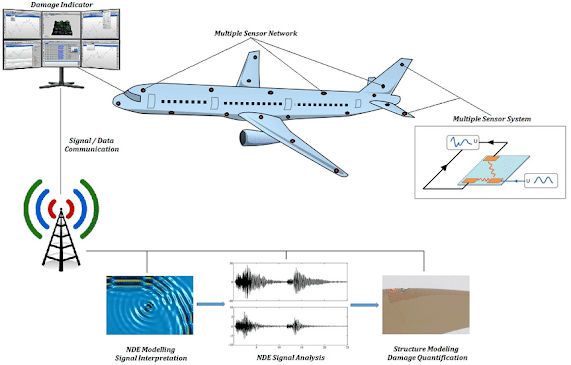US IMU and Inertial Navigation System Market Size and Analytical Overview by 2030
The global inertial measurement unit (IMU) market size was valued at USD 15.71 billion in 2021 and is projected to grow from USD 16.41 billion in 2022 to USD 28.37 billion by 2029, exhibiting a CAGR of 8.13% during the forecast period.
The US Inertial Measurement Unit (IMU) and Inertial Navigation System (INS) are critical technologies used in various applications, including aerospace, defense, robotics, and autonomous vehicles. In the United States, these systems have played a significant role in navigation and guidance for a wide range of platforms. In this article, we will delve into the basics of IMU and INS, their functioning, applications, and their significance in the US context.
Informational Source:
https://www.fortunebusinessinsights.com/industry-reports/inertial-measurement-unit-market-101827
Major Key Companies Covered in US IMU and Inertial Navigation System Market are:
- Analog Devices Inc. (U.S.)
- Gladiator Technologies (U.S.)
- Honeywell International Inc.(U.S.)
- Parker Hannifin Corp (U.S.)
- General Electric Company (U.S.)
- Israel Aerospace Industries Ltd. (IAI) (Israel)
- Thales Group (France)
- Northrop Grumman Corporation(U.S.)
- Robert Bosch GmbH(Germany)
- Trimble Inc. (U.S.)
- Safran S.A(France)
- TDK Corporation(Japan)
US Inertial Measurement Unit (IMU):
An IMU is a device that combines multiple sensors to measure and report an object's specific force, angular rate, and sometimes the orientation. It typically consists of three key components:Gyroscope: A gyroscope measures the angular rate or the rate of rotation around different axes. It provides information about the object's orientation and can be used to calculate changes in position.
Accelerometer: An accelerometer measures the specific force or acceleration experienced by an object. It can detect linear motion or changes in velocity along different axes.
Magnetometer (optional): A magnetometer measures the strength and direction of the magnetic field. It is primarily used to determine the object's heading or orientation relative to the Earth's magnetic field.
The IMU combines the measurements from these sensors to estimate the object's position, orientation, and velocity using mathematical algorithms such as sensor fusion techniques.
- Inertial Navigation System (INS):
An INS is an advanced navigation system that utilizes the measurements from an IMU to determine the position, orientation, and velocity of a moving object. It operates based on the principles of inertial navigation, which rely on the object's inertia and the laws of physics. The system continuously integrates the acceleration measurements from the IMU to estimate the velocity and further integrates the velocity to calculate the object's position.
INS systems often incorporate additional sensors and technologies to enhance accuracy and overcome certain limitations. These may include GPS (Global Positioning System) receivers, barometric altimeters, magnetometers, and odometry sensors. By fusing the data from these sensors with the IMU measurements, an INS can provide highly accurate and reliable navigation information.
Applications of IMU and INS:
IMU and INS technologies have widespread applications in various fields. Some notable applications include:Aerospace: IMUs and INS systems are extensively used in aircraft, spacecraft, and missiles for navigation, guidance, and control. They provide critical information to pilots and autopilot systems, ensuring accurate flight paths, attitude control, and target tracking.
Defense: Military platforms such as tanks, submarines, and unmanned aerial vehicles (UAVs) rely on IMU and INS technologies for precise navigation and targeting. They play a crucial role in military operations, including reconnaissance, surveillance, and weapon systems.
Robotics: IMUs and INS systems are used in robotics for localization, mapping, and motion control. They enable robots to navigate autonomously in complex environments and perform tasks with high accuracy.
Autonomous Vehicles: IMU and INS technologies are vital for autonomous cars, drones, and underwater vehicles. They provide real-time positioning and orientation information, ensuring safe and reliable autonomous operations.
Sports and Motion Capture: IMUs find applications in sports training, motion capture, and virtual reality. They can track and analyze human movements, enabling athletes to improve performance and facilitating realistic virtual experiences.
Significance in the US context:
In the United States, the development and deployment of IMU and INS technologies have been driven by various government agencies, defense organizations, research institutions, and private companies. The US military heavily relies on these systems for its aircraft, missiles, and ground-based operations. The aerospace industry, including companies like Boeing and Lockheed Martin, has been instrumental in advancing IMU and INS technologies.
The US Department of Defense (DoD) has invested significant resources in research and development of advanced navigation systems, aiming to enhance the capabilities of military platforms. The integration of GPS with INS has been a major focus, enabling precise positioning even in GPS-denied environments.
Furthermore, the US automotive industry is actively working on autonomous vehicle technologies, where IMU and INS systems play a crucial role. Companies like Tesla, Waymo, and General Motors are pushing the boundaries of autonomous driving, relying on IMU and INS technologies for accurate and safe navigation.
In conclusion, the US Inertial Measurement Unit (IMU) and Inertial Navigation System (INS) are essential technologies used for navigation, guidance, and control in various applications. With their ability to provide accurate and reliable positioning information, these systems have become indispensable in aerospace, defense, robotics, and autonomous vehicles. In the United States, IMU and INS technologies have been at the forefront of technological advancements, driven by government agencies, defense organizations, research institutions, and industry leaders, with significant contributions to military operations, aerospace industry, and autonomous driving.




Comments
Post a Comment